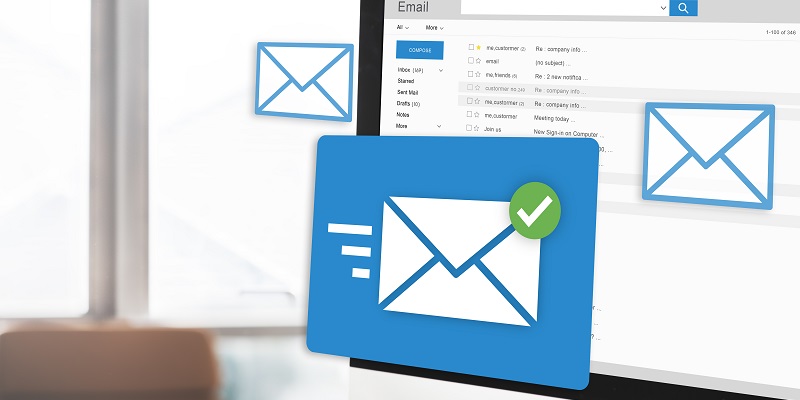In today’s digital age, where social media rules the online space, email marketing often takes a backseat. However, building a substantial email list remains crucial because it provides you with a direct line of communication to your target audience. With email marketing, you have the power to reach your subscribers directly, delivering personalized content, promotions, and information straight to their inbox. In this article, we will explore the importance of building an email list and provide you with an in-depth guide on how to do it successfully.
Setting clear goals before starting the email list building journey
Before embarking on your email list building journey, it’s essential to define clear goals. Determine what you want to achieve with your email marketing efforts. Are you aiming to increase website traffic, improve lead generation, enhance customer engagement, or boost sales? Setting specific goals will help you create effective strategies and accurately measure your success.
Providing valuable incentives to entice visitors to subscribe
To entice visitors to subscribe to your email list, offer them something valuable in return. This could be exclusive content, a discount or coupon, a free e-book, access to a resource library, or even a personalized newsletter. By providing something of value, you increase the likelihood of visitors willingly sharing their email addresses, knowing they will benefit from your content.
The significance of effective sign-up forms in capturing leads
Your website’s sign-up forms play a crucial role in capturing leads. Ensure that your forms are strategically placed where they are easily visible to visitors. Keep the form simple and ask for minimal contact information to reduce friction. Experiment with different designs, colors, and copy to optimize conversions. Additionally, consider implementing a double opt-in process to ensure that subscribers are genuinely interested in receiving your emails.
Promoting email sign-up forms through social media platforms
One effective way to tap into your existing audience and attract new subscribers is by promoting your email sign-up forms on your social media platforms. Create compelling posts that highlight the value of subscribing and include a direct link to your sign-up form. You can also engage in collaborations and guest posting on other industry-related blogs or websites to expand your reach and attract a broader audience to your email list.
Utilizing webinars and virtual events to attract a targeted audience
Webinars and virtual events are excellent opportunities to attract a targeted audience interested in your industry or niche. Organize engaging and informative webinars that provide valuable insights or training sessions. Require participants to register with their email addresses, effectively growing your email list with interested prospects. By providing valuable content during these events, you increase your authority in the industry and strengthen your relationship with your subscribers.
Using Contests and Giveaways to Encourage User Participation and Sign-ups
Contests and giveaways are an effective way to encourage user participation and increase email sign-ups. Create exciting contests or giveaways that require participants to provide their email addresses for entry. Make sure the prizes align with your target audience’s interests and offer an exclusive experience or product related to your brand. This will not only increase your email list but also generate buzz and engagement around your brand.
The benefits of investing in paid advertising to broaden reach
While organic methods like social media promotion and content marketing are valuable, investing in paid advertising can help you reach a broader audience. Platforms like Google Ads and social media advertising allow you to target specific demographics, interests, and behaviors, ensuring that your ads are seen by the right people. By directing these ads to dedicated landing pages with sign-up forms, you can effectively grow your email list with high-quality leads.
The Importance of Segmenting the Email List for Tailored Content
Segmentation is key to successful email marketing. By dividing your email list into different subscriber groups, you can send tailored content based on their specific interests or preferences. Segment your list based on factors such as demographics, behavior, or purchase history. This way, you can provide personalized recommendations, exclusive offers, and relevant information, increasing engagement and conversions.
The use of email marketing analytics to measure campaign performance
To measure the effectiveness of your email marketing campaigns, utilize email marketing analytics. Monitor metrics such as open rates, click-through rates, conversion rates, and unsubscribe rates. Analyzing these metrics will provide valuable insights into what works and what doesn’t, allowing you to optimize your email campaigns further. Experiment with different subject lines, call-to-actions, and content formats to see what resonates best with your audience.
Building a substantial email list is an essential aspect of modern marketing strategies. It provides you with a direct line of communication to your target audience, enabling personalized engagement and increased conversions. By setting clear goals, providing valuable incentives, optimizing sign-up forms, promoting through social media, utilizing webinars and events, using contests and giveaways, investing in paid advertising, segmenting your list, and analyzing campaign performance, you can successfully build and leverage your email list to grow your business. So start implementing these strategies today and watch your email list and customer engagement flourish.

